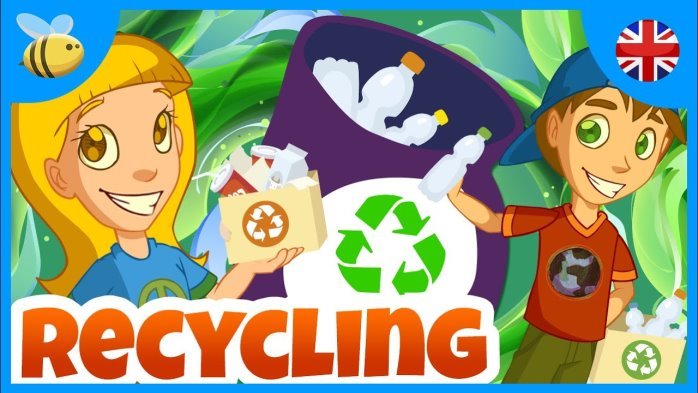Розробка уроку "Recycling"
ОЗНЗ Кагарлицька ЗОШ І-ІІІ ст..№3
Конспект уроку для 2 класу
на тему

Підготувала вчитель англ.мови
Путієнко Ю.Б
RECYCLING
OBJECTIVES: - to extend pupils’ understanding of recycling;
- to give practice in listening and matching;
- to enable pupils to make use of their world knowledge
BASIC COMPETENCES:
Language competence: Pupils use known language to talk about Science in English.
Social and civic competences: Pupils learnt that it is good for the environment to recycle rubbish.
Basic competences in science and physical education: Pupils learn about recycling.
Learning to learn: Pupils think about what they have learnt by matching materials that can be recycled.
LANGUAGE:
New language: recycling, throw away, rubbish, newspapers, bottles, jars, glass, metal, earth.
Recycled language: can, garden, paper.
1.Greeting.
Hello,children! How are you?
2.Warming up."Muffin Songs - Hello "
- Look at this bin and tell me: - What is it? And What goes in there?
I’d like to join your, so important, discussion about garbage. As you know, developed countries don’t simply throw out their waste, like we often do. They sort it. In general, the idea is the same but, anyway, every country has its system.
-Let’s watch two short videos about waste collection system in British and German cities and compare them.
-Your task is to find the differences!
Video 1: City of Greater Dandenong (Britain)
Green lid: greenery: grass, leaves, small branches, flowers, weeds – taking to compost.
Yellow lid (recycling): glass bottles, glass jars, aluminium cans, steel cans, foil trays, aerosol cans, newspapers, magazines, envelopes, catalogues, cardboard, plastic bottles, milk and juice containers – are collected and taking to recycling storing factory and make new products.
Warning: NO plastic bags in Recycling bin.
Red lid (garbage): broken glass, crockery, nappies, soft plastic, some food scraps.
Video 2: Hohenheim (Germany)
Brown (black) bin: organic waste.
Yellow bin: recyclable plastic and metals.
White bin: glass bottles, no deposit (you can return deposit ones to the supermarkets and get some cash).
Blue (green) bin: paperboard, cardboard.
Big black container: old shoes, rubber, tires.
Batteries, chemicals, soil and bricks are not going to any of these bins. They go to transfer station.
-So, how many waste bins are there in the City of Greater Dandenong?
And in Hohenheim?
-What colour are they?
-What can we put into a green bin (yellow, red)?
So, the differences are: 1) colours of bins.
2) The sorting. (In Germany glass, cardboard and paper are separated from plastic)
-Let’s train to sort the garbage.
You can see some waste in the picture. Sort it.
Remind, please, what colour is the bin for paper (glass, plastic, organic)? Colour only lids, please.
-Great. Well done.
-We come back to foreign experience. Let’s talk about recycling. Here is an example: process of recycling plastic bottles in the factory calls Repreve. Let’s watch!
-Who can tell us what happens with plastic bottles?
Plastic bottles are collected, sorted, cleaned and chopped in high quality flakes. Then bottle flakes turned to something, called chip (small pieces of plastic). Then chip is melted and make recycled fiber. Then fiber is made to fabric.
-Let’s reconstruct the chain!
Bottles – flakes – chip – fiber – fabric.
-Is it important to give plastic bottles the second life? Why?
(They pollute the planet.)
That’s why, our motto is:
Recycle – buy recycled products – join to green movement.
.


про публікацію авторської розробки
Додати розробку
